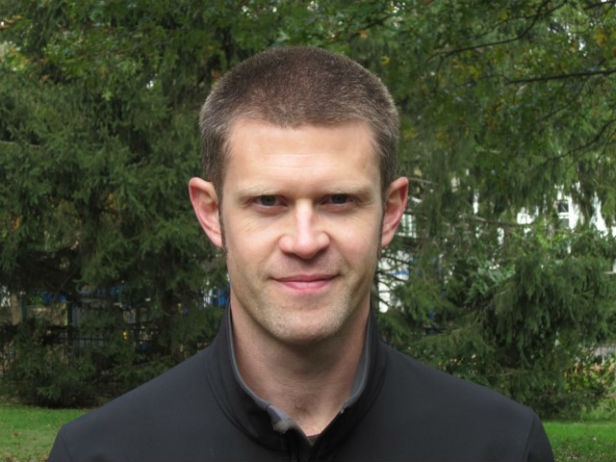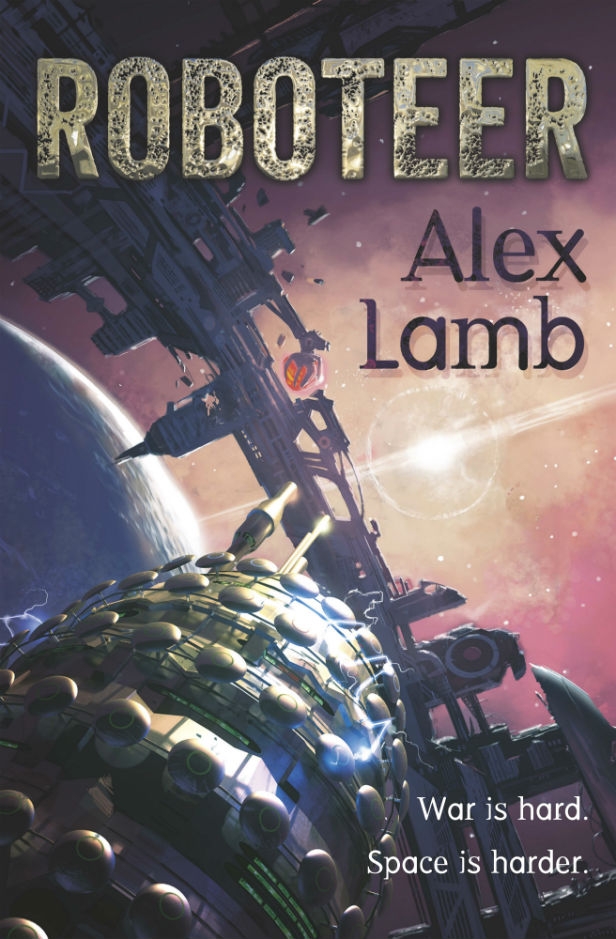 Science += Fiction, My Twisted Path to Print
Science += Fiction, My Twisted Path to Print
Back in the year 1997, which feels like a long time ago now, I was a participant in the Clarion West writers workshop in Seattle. In the fourth week of that workshop, a friend made an unexpected remark that changed my life.
That week, our instructors were Beth Meacham and Tappan King, who’d come to give us something of an introduction to the world of novel publishing. Instead of writing a story that week, each of us was asked to produce a novel outline for criticism and discussion. My premise had to do with the uploading of human consciousness into quantum computers and subsequent adventures in the digital worlds of the dead. My outline was being well received all round and I was delighted. Then, close to the end of the session, my excellent friend Nancy Moore had the opportunity to speak.
“It’s a great proposal, Alex,” she said. “It’s a shame it could never happen.”
I was confused. I asked her what she meant.
“Well, you can’t run a human mind on a computer,” she told me. “Roger Penrose had proved it.”
My background is in artificial intelligence research, so I was skeptical of this assertion while being fascinated by her remark nonetheless. Afterwards, we had a great conversation on the subject and I resolved to read the book that had convinced Nancy: Penrose’s pop-science classic, The Emperor’s New Mind.
In that book, Roger Penrose essentially states that because nature isn’t computable, neither is the human mind. Human brains, he proposes, depend on quantum effects that make it impossible for us to model them with lowly machines. Not only did Penrose fail to convince me of that proposition, but his book actually convinced me of almost the opposite idea. There wasn’t a single example of non-computable nature in his book that I didn’t think I could build.
I’ve been writing software for a living since I was sixteen and I’d never been given programming project that I couldn’t crack. So, while I didn’t have a particularly deep understanding of physics at that time, Penrose’s statements irked me. I felt like someone had handed me a challenge.
Over the next few years as I developed my skills as a writer, I taught myself physics. I wasn’t looking to become a physicist per se, or to come up with some ultimate theory of everything. Rather, my goal was to take every symmetry of nature that Penrose had presented as uncomputable, one at a time, and to reproduce it faithfully in code. Furthermore, I wanted that code to be simple, robust, and to contain not a single line of mathematical formulae. I wanted, in effect, to reboot physics as a software project.
This wasn’t a serious endeavour, mind you. It was all done in the spirit of intellectual play. So in 2009, when I found myself standing up at a scientific conference delivering a talk on simulating relativistic particles in a spatial network, I was as surprised as anyone could be. What I had done, to my own satisfaction, at least, was to demonstrate that Penrose was exactly wrong. Every symmetry of nature can be modelled with networks and simple algorithms, from quantum mechanical spin to Lorentz invariance. It’s not always easy, or intuitive, or fast, but it’s possible.
To put this achievement in perspective, I should make it clear that it doesn’t actually help science that much. For starters, the tools I came up with are primitive and clumsy. They require more work than the ones that physicists already have. They’re curiosities rather than works of useful research. There is no great new theory of the universe lurking behind my simulations. But what I gained from pursuing that quixotic goal for so many years wasn’t an achievement in physics. What I gained were the tools to understand and model complex natural phenomena, along with a host of wonderful friends working in science.
 Around the same time that I found myself at that conference, several things happened. I watched the publishing world struggle under the pressure of the Credit Crunch and lost heart at ever having my novels published. I received offers of collaboration on a variety of simulation science projects, and my wife and I moved to a new city. The result of all this was that I put down writing seriously and began a new life as a semi-professional scientific programmer and simulation scientist. As it turned out, there were far more people interested in the kinds of tools I was using in the worlds of biology and complex systems than there were in particle physics. By the time that Gollancz informed me that they wanted to buy my novel Roboteer in 2013, I was working in the Evolutionary Biology department at Princeton university.
Around the same time that I found myself at that conference, several things happened. I watched the publishing world struggle under the pressure of the Credit Crunch and lost heart at ever having my novels published. I received offers of collaboration on a variety of simulation science projects, and my wife and I moved to a new city. The result of all this was that I put down writing seriously and began a new life as a semi-professional scientific programmer and simulation scientist. As it turned out, there were far more people interested in the kinds of tools I was using in the worlds of biology and complex systems than there were in particle physics. By the time that Gollancz informed me that they wanted to buy my novel Roboteer in 2013, I was working in the Evolutionary Biology department at Princeton university.
With Gollancz’s offer began my return to the world of professional fiction writing—a journey that it still unfolding and which delights me every day. I feel that my curious sidelong foray into science has greatly informed my fiction and given me a new perspective on life. My debut novel, Roboteer, and its sequels to come, are powerfully informed by the things I learned. But my journey has given me much more than that.
Simulation science is, in a way, a kind of science fiction. You build a scenario. You populate it with agents instead of characters, and then you let them loose to see what they do. Often, the result is greater than the sum of its parts. And this is actually true of any piece of scientific theory. A theory is a narrative we use to interpret and predict nature which happens to be written in code or formulae rather than words.
When looking at the towering achievements of modern science, we sometimes forget this. We confuse the models with reality. We assume that because it’s written in a language we’re not familiar with, that an understanding of science lies outside our reach. But if there’s one thing that my toy physics models taught me, it’s that there’s more than one way to reproduce the effects of nature. And that if you don’t understand nature the way it’s presented to you, that’s the model’s fault, not yours. You should never stop looking for answers. Along the way, you may find something someone else has missed.
For this reason I believe that science and science fiction are better together. A dialog between writers, readers, and researchers lets us learn from each other. It keeps us honest and reminds us to remain skeptical in our search for truth. After all, were it not for that one remark in a writers’ group 1997, I’d surely not be where I am today.
Roboteer by Alex Lamb is available now in hardcover and ebook from Gollancz. You can buy the Kindle Edition for £1.99 at Amazon.co.uk. Keep up with the latest genre news with the new issue of SciFiNow.
